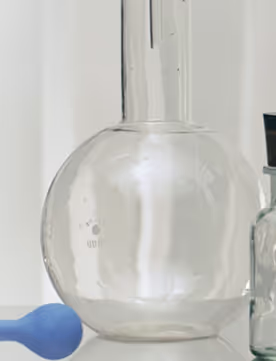Psoriasis is an immune-mediated disease in which skin cells multiply and move to the skin’s surface too quickly, building up and causing uncomfortable rashes and inflamed skin. This chronic condition can cause thick patches or plaques that appear scaly, dry, and inflamed and may affect several parts of the body. Most commonly affected are the face, scalp, elbows, and knees, but skin on any part of the body can be affected, and even fingernails and toenails may be involved. This article will concentrate on the sensitive matter of psoriasis on the face, as this condition can greatly affect your self-esteem and overall quality of life. Along with the types, causes, and holistic approaches to managing the impact of this condition’s inflammatory response, this piece will focus on 6 hallmark symptoms of psoriasis on the face. (Source)

What Is Psoriasis?
Psoriasis is an immune-mediated disease, meaning it is inflammatory and is associated with an abnormal immune response that has no clear cause. Although the most visible symptoms of psoriasis are irritation and plaques on the skin, elevated levels of cytokines, or pro-inflammatory signaling proteins, and other markers of inflammation are found throughout the body in people with the condition. Studies have found that moderate to severe psoriasis is often accompanied by inflammation of the liver, joints and tendons, and blood vessels that may be subclinical, or without noticeable symptoms. This means psoriasis is not just a skin condition, but a systemic disease. (Source, Source)
Nevertheless, it is psoriasis’ effect on the skin that is most obvious. Normally, it takes about a month for skin cells generated in the lower skin layers to migrate up to the surface, die, and be shed, but with psoriasis they rise to the surface within 3 or 4 days. Instead of shedding, or falling off, the cells pile up, forming thick, uncomfortable lesions called plaques. Diagnosing psoriasis may be difficult, as its symptoms often overlap with those of other skin disorders. Your health care provider may need to take a skin sample that can be examined under a microscope.
Because the chronic inflammation and immune dysfunction associated with psoriasis goes far beyond the skin, having the condition makes you more likely to develop other autoimmune or immune-mediated diseases. Psoriasis is associated with:
- systemic lupus erythematosus
- autoimmune thyroid disease
- celiac disease
- inflammatory bowel disease
- multiple sclerosis
- Sjögren's syndrome
- vitiligo
- alopecia areata
Affecting adults more often than children, psoriasis can actually occur at any age. Research has shown the average onset of psoriasis may occur between the ages of 15 and 20, and can peak between 55 and 60 years of age. Much like other immune-mediated diseases, psoriasis is characterized by periods of flares and remission that may vary with stress, traumatic events, and lifestyle factors such as smoking, heavy alcohol consumption, or excess weight. (Source)
Although there are many types of psoriasis, the most common type is plaque psoriasis that presents as white, silvery, scaly plaques found on the abdomen, arms, legs, and scalp. Psoriasis, which is not contagious and cannot be passed from person to person, affects people worldwide, with about 2%–3% of people affected in the United States. Though a cure for psoriasis is not available, there are many possible means of managing symptoms of this systemic disease to improve quality of life for people with psoriasis. (Source, Source)
Types of Facial Psoriasis
Psoriasis of the face is characterized by having one or more thick, red, and dry patches of skin on the face that do not go away. It may affect the scalp, forehead, hairline, eyes, eyelids, eyebrows, ears, the area between the nose and upper lip, and the inside and outside of the mouth. Facial psoriasis is usually quite mild and only occurs in about half of those with psoriatic disease. It’s uncommon to have psoriasis that affects only the face; most people with this rash on their face also have it somewhere else on their body. Because the skin on and around the face is so sensitive, it can be a difficult area to treat.
There are 3 types of facial psoriasis, known as hairline psoriasis, sebopsoriasis, and true facial psoriasis. (Source, Source)
Hairline Psoriasis
Also known as peripherofacial psoriasis, this is psoriasis of the scalp that extends beyond the hairline onto the face. Red and thickened plaques may affect the skin on the forehead and around the ears. (Source)
Sebopsoriasis
Also known as centrofacial psoriasis, this type of psoriasis may also affect the hairline in addition to the eyelids, eyebrows, beard area, and the space between the nose and upper lip. The symptoms of sebopsoriasis are a combination of two overlapping conditions, psoriasis and seborrheic dermatitis. With time, it may become clear that symptoms are being caused by just one of these conditions. (Source, Source)
True Facial Psoriasis
Also known as mixed psoriasis, this type of psoriasis can affect any area of the face and is characterized by red and scaling plaques. True facial psoriasis presents as plaques that are symmetrical and distinguishable most of the time. (Source)
Causes of Facial Psoriasis
The exact cause of facial psoriasis isn’t yet known, but certain factors may influence disease symptoms. Research has found genetic predisposition and environmental factors may combine to trigger the immune system malfunction leading to psoriasis. Your risk of developing psoriasis could be heightened if you are genetically predisposed to the disorder, especially if you have family members that suffer from it. Lifestyle factors that may contribute to disease onset or make your psoriasis worse include:
- infections, especially streptococcus and HIV
- medicines, specifically those that manage heart disease, malaria, and mental health conditions
- smoking
- excess weight
- sun exposure
- skin bacteria, specifically the yeast Malassezia

6 Hallmark Symptoms of Facial Psoriasis
There are many different symptoms that may accompany psoriasis, and while some of them are unique to psoriasis alone, some mimic those of other skin conditions. Due to this challenge, psoriasis may be difficult to diagnose. The symptoms you experience will depend on what region of your face the psoriasis affects, but hallmark symptoms anyone may experience include:
- patches of skin or plaques of thick skin with silvery-white scales
- scaling that itches or burns
- red and irritated skin
- dry, cracked skin that may bleed when scratched
- flaking
- discoloration
(Source)

.avif)
%20(1).avif)
%20(1).avif)

.avif)












.avif)

%2520(1).avif)



